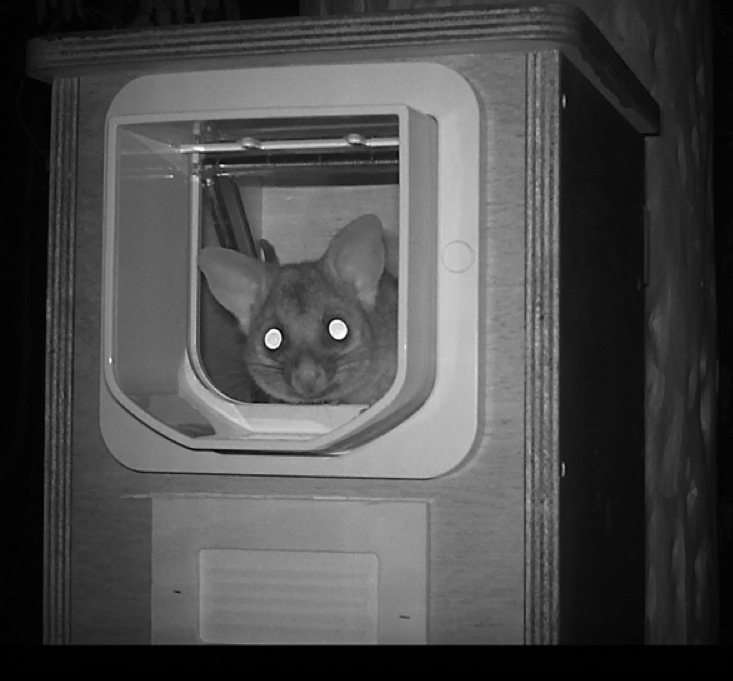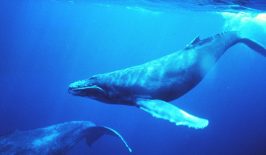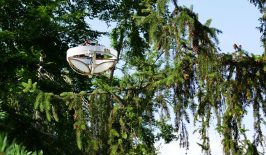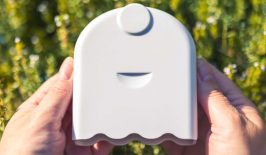Habitat destruction from human causes is a problem all over the world. Habitat loss takes many forms, ranging from environmental disasters, landscape changes for forestry and agriculture or settlement building to complex effects of climate change. The disappearance of suitable habitats has a major impact on species extinction. While some animal and plant species have relatively low demands on their environment, there are many species that require very specific habitats and when they are destroyed, replacements are difficult or impossible to find. If these demanding and sometimes endemic animal and plant species no longer find a suitable home, they are often the first to disappear.
Scientists agree that global habitat destruction must be halted, or at least massively reduced, in order to stop species extinction. As a plan B, there are numerous approaches for artificial habitat alternatives which can be adapted to the needs of an individual species as well as entire animal and plant communities, which give them a relatively high rate of survival.
Artificial habitats can be very different in appearance from their natural counterparts. There are relatively simple and inconspicuous dwellings to complex, organic-aesthetic structures that seem like props from a science fiction film. Laser measurement, microchip technology or 3D printing are some methods often used in their development.
What examples of artificial habitats are out there?
The Australian giant owl (Ninox strenua), for example, lacks suitable trees with burrows for nesting in its natural habitat. Corresponding tree species need several decades to grow until they are of sufficient size with tree cavities. Researchers from the University of Melbourne have made a large effort to develop an alternative habitat for the creatures. They initially offered them nesting boxes, carved logs and computer-designed caves, however the Australian giant owl proved to be demanding and did not accept any of the offered alternatives.
In a second attempt, the researchers used 3D scans, computer-aided modelling, digital fabrication and augmented reality assembly based on old termite trees, a popular choice of habitat for the little owls. With the help of various digital technologies, they succeeded in producing extremely light individual building blocks that can be assembled according to a kit principle and thus adapted to individual needs. Due to the low weight, the artificial dwellings could also be attached to young, thin trees. Unfortunately, the Australian giant owl did not accept these alternatives either. In return, other animal species moved into the carefully constructed shelters, so the scientists consider the current result a partial success and want to expand the project.
The solution proposed for the artificial habitat for the brushtail possum (Trichosurus vulpecula) at the University of Queensland is considered controversial. This marsupial species is still relatively widespread across Australia and New Zealand. Nonetheless, this species is under increasing pressure to find adequately secure hiding places, nesting sites and food. Pressure from competitors and predators is also great. Researchers developed a solution tailored solely to the brushtail possum and using microchip technology. To do this, individual possums had to be caught and implanted with a small microchip. After a short training phase, the marsupials have learned that the nest boxes installed for them open in their presence. When a chipped chestnut possum approached, the box registered the microchip signal and unlocked the security door. The door then closed automatically.
The “Living Seawalls” approach from the Sydney Institute of Marine Science and Reef Design Lab and the Volvo company, as an artificial habitat replacement, is not only aimed at a single species, but is intended to offer shelter to a wide variety of sea creatures. The hexagonal shape of the new “sea walls” is reminiscent of insect honeycombs and the organic root structures on top imitate the local mangrove trees. Due to the different-sized holes and niches on the tile and the rough surface, both small and larger marine animal and plant species are interested. The “Living Seawalls” are made from recycled plastic using a 3D printing process. The idea was developed because parts of the coastal habitat were lost due to flood protection walls for the local population being erected. The protective walls with their smooth surfaces are not habitable for the marine animal and plant species. According to scientists, however, the new tiles in Sydney Harbor now offer a new home to a total of more than 115 species, such as various types of fish, snails, mussels and seaweed. There are now similar projects in Germany, Wales, Gibraltar, Boston and Singapore.
Risks and opportunities of the new approach
As diverse as the different habitats are, the possible solutions seem to be just as diverse. Various factors play a role in their sustainable success. There is no doubt that researchers agree that the ultimate goal must be to end the massive destruction of habitats in the world. The artificial habitats can therefore only be a supplementary measure or an opportunity to bridge with appropriate housing until the destroyed habitat has regenerated.
Of course, the transitional quarters should not lead to them being financed as a compensatory measure and the habitats ultimately just being indifferently further destroyed. Various questions also arise with regard to the artificial dwellings themselves. How many resources – such as time and money – are in balance with the chances of success in trying to save a single species? Because failure must also be accepted, as the example of the Australian giant owl shows. And how invasive is it allowed to be? The chipping of the brushtail possum not only represents an immense effort in the implementation, but can also mean stress for the animals. It would also be desirable to use sustainable materials in the construction of the artificial shelters. Come in addition, that many of the solutions focus on just one type. However, there are often complex interactions between different species within an ecosystem community. These are not always known and researched. If an important partner is lost through the same habitat destruction, this also has an influence on the species for which an artificial alternative dwelling was specially made.
Nevertheless, this approach has great potential for species conservation. Successful projects for entire animal and plant communities, such as the “Living Seawalls”, show that great effects can be achieved with relatively little effort – without looking at just one species. Not only have many marine creatures found a new home here, but such projects can also give people hope and motivate them to take action against the loss of biodiversity and make a difference. In addition, their media presence draws attention to endangered species and can thus promote their protection. The greatest potential of the artificial alternative habitats, however, lies in the fact that they open up new paths in nature conservation. The concepts could be particularly well suited for cities and settlement areas. The artificial structures of house walls, walls and sealed surfaces that already exist there could be enhanced by the artificial dwellings and thus increase biodiversity in urban areas.
Through our actions, many species in the world are being displaced or threatened with extinction – that is why we as humanity also bear the responsibility for the development of suitable solutions. The concept of artificial habitats is not yet fully developed and is currently based on a try-and-error methodology. Nevertheless, it provides important impetus for species protection. Corresponding projects should therefore be promoted and further developed. In the future, the most successful approaches could make a lasting contribution to preserving biodiversity alongside conventional species










